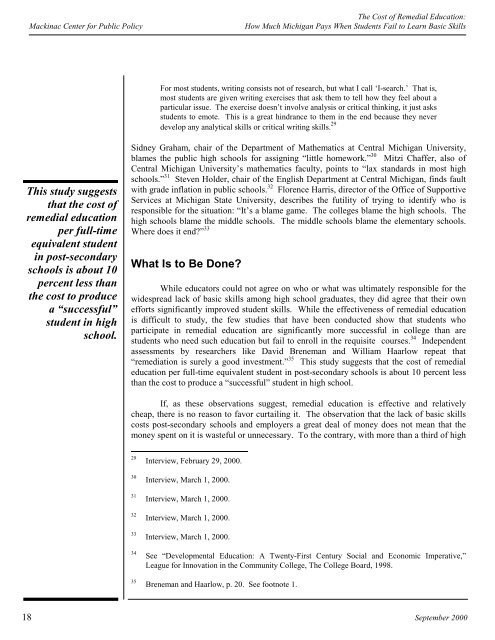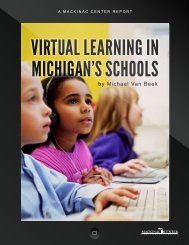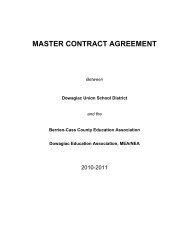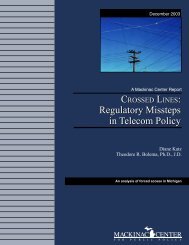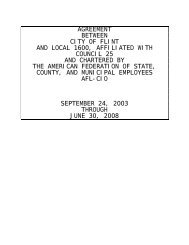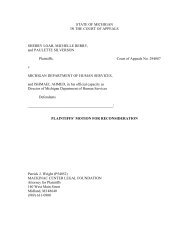The Cost of Remedial Education - Mackinac Center
The Cost of Remedial Education - Mackinac Center
The Cost of Remedial Education - Mackinac Center
Create successful ePaper yourself
Turn your PDF publications into a flip-book with our unique Google optimized e-Paper software.
<strong>The</strong> <strong>Cost</strong> <strong>of</strong> <strong>Remedial</strong> <strong>Education</strong>:<br />
<strong>Mackinac</strong> <strong>Center</strong> for Public Policy How Much Michigan Pays When Students Fail to Learn Basic Skills<br />
For most students, writing consists not <strong>of</strong> research, but what I call ‘I-search.’ That is,<br />
most students are given writing exercises that ask them to tell how they feel about a<br />
particular issue. <strong>The</strong> exercise doesn’t involve analysis or critical thinking, it just asks<br />
students to emote. This is a great hindrance to them in the end because they never<br />
develop any analytical skills or critical writing skills. 29<br />
This study suggests<br />
that the cost <strong>of</strong><br />
remedial education<br />
per full-time<br />
equivalent student<br />
in post-secondary<br />
schools is about 10<br />
percent less than<br />
the cost to produce<br />
a “successful”<br />
student in high<br />
school.<br />
Sidney Graham, chair <strong>of</strong> the Department <strong>of</strong> Mathematics at Central Michigan University,<br />
blames the public high schools for assigning “little homework.” 30 Mitzi Chaffer, also <strong>of</strong><br />
Central Michigan University’s mathematics faculty, points to “lax standards in most high<br />
schools.” 31 Steven Holder, chair <strong>of</strong> the English Department at Central Michigan, finds fault<br />
with grade inflation in public schools. 32 Florence Harris, director <strong>of</strong> the Office <strong>of</strong> Supportive<br />
Services at Michigan State University, describes the futility <strong>of</strong> trying to identify who is<br />
responsible for the situation: “It’s a blame game. <strong>The</strong> colleges blame the high schools. <strong>The</strong><br />
high schools blame the middle schools. <strong>The</strong> middle schools blame the elementary schools.<br />
Where does it end?” 33<br />
What Is to Be Done?<br />
While educators could not agree on who or what was ultimately responsible for the<br />
widespread lack <strong>of</strong> basic skills among high school graduates, they did agree that their own<br />
efforts significantly improved student skills. While the effectiveness <strong>of</strong> remedial education<br />
is difficult to study, the few studies that have been conducted show that students who<br />
participate in remedial education are significantly more successful in college than are<br />
students who need such education but fail to enroll in the requisite courses. 34 Independent<br />
assessments by researchers like David Breneman and William Haarlow repeat that<br />
“remediation is surely a good investment.” 35 This study suggests that the cost <strong>of</strong> remedial<br />
education per full-time equivalent student in post-secondary schools is about 10 percent less<br />
than the cost to produce a “successful” student in high school.<br />
If, as these observations suggest, remedial education is effective and relatively<br />
cheap, there is no reason to favor curtailing it. <strong>The</strong> observation that the lack <strong>of</strong> basic skills<br />
costs post-secondary schools and employers a great deal <strong>of</strong> money does not mean that the<br />
money spent on it is wasteful or unnecessary. To the contrary, with more than a third <strong>of</strong> high<br />
29<br />
30<br />
31<br />
32<br />
33<br />
34<br />
35<br />
Interview, February 29, 2000.<br />
Interview, March 1, 2000.<br />
Interview, March 1, 2000.<br />
Interview, March 1, 2000.<br />
Interview, March 1, 2000.<br />
See “Developmental <strong>Education</strong>: A Twenty-First Century Social and Economic Imperative,”<br />
League for Innovation in the Community College, <strong>The</strong> College Board, 1998.<br />
Breneman and Haarlow, p. 20. See footnote 1.<br />
18 September 2000


